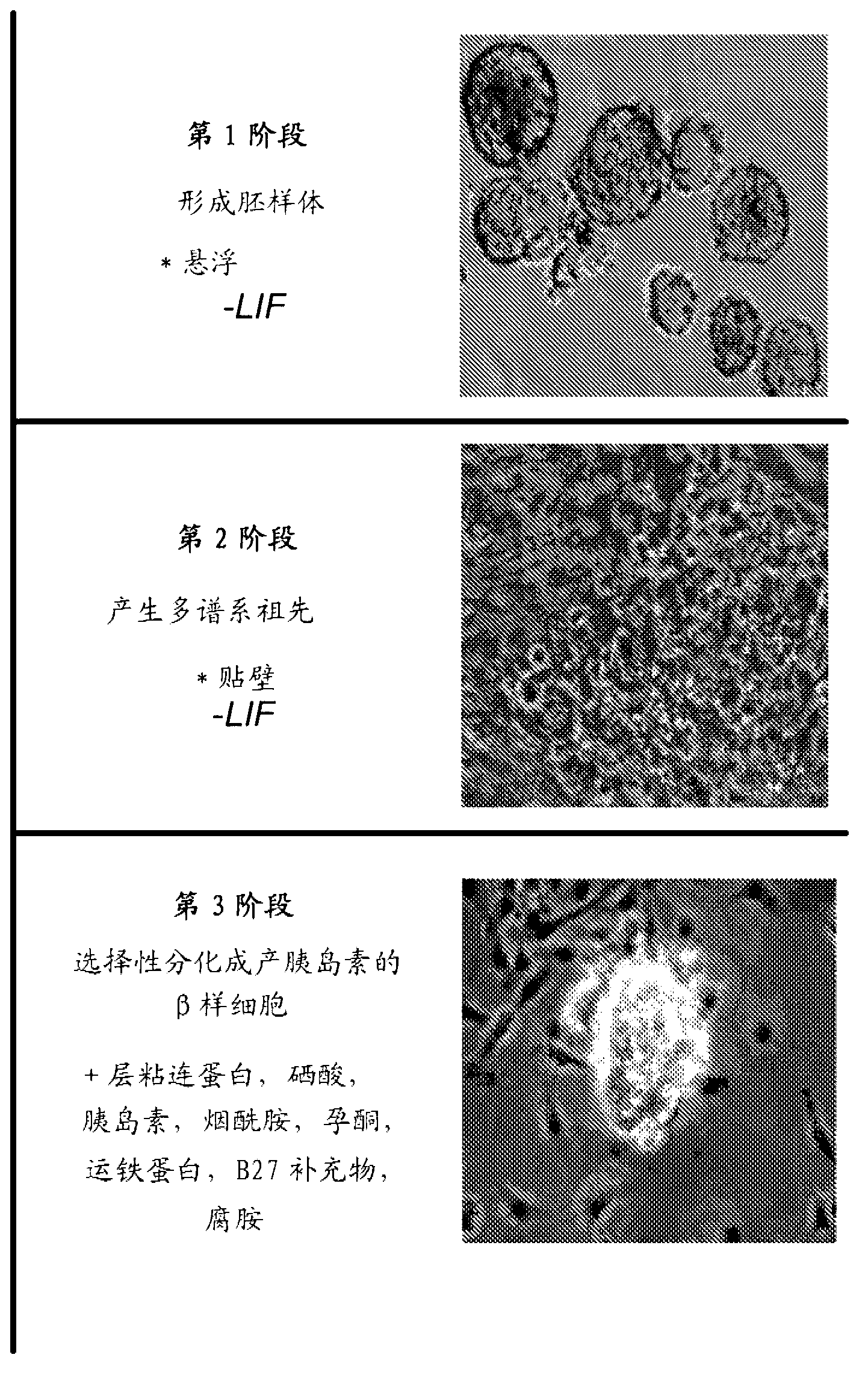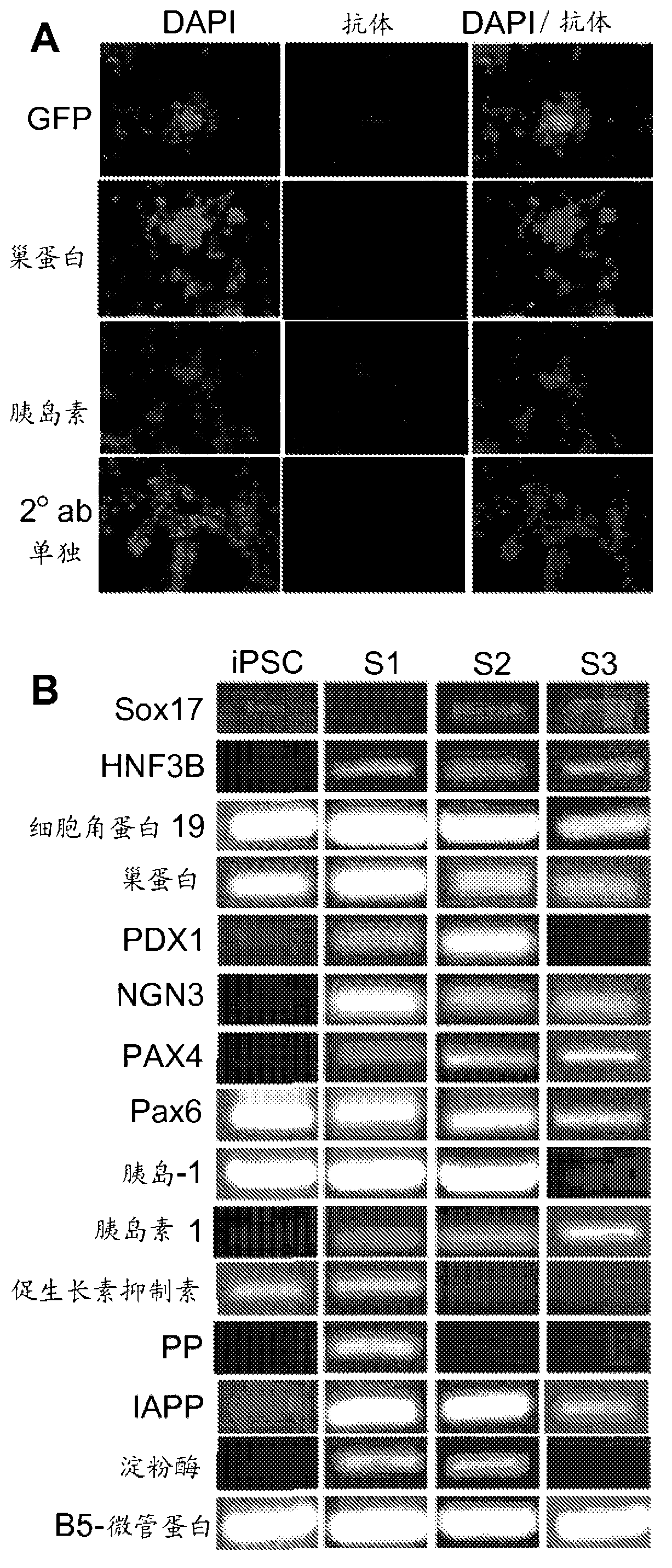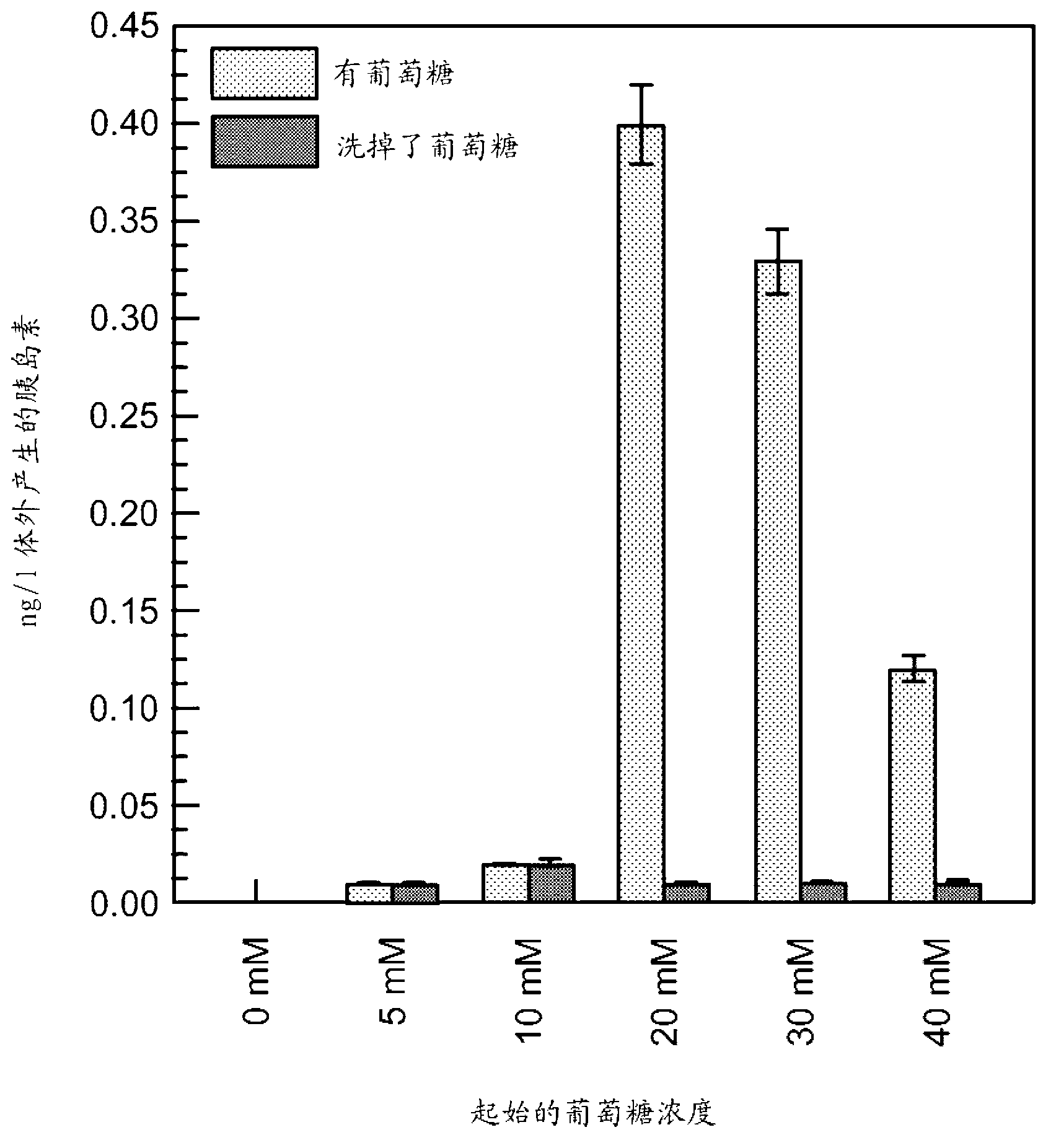Methods and compositions for treating diabetes with iPS derived pancreatic beta-like cells
A diabetes and cell technology, applied in the field of stem cells) and its treatment of diseases, can solve problems such as poor insulin secretion and non-existence
- Summary
- Abstract
- Description
- Claims
- Application Information
AI Technical Summary
Problems solved by technology
Method used
Image
Examples
Embodiment 1
[0076] Materials and methods
[0077] iPS production and culture
[0078] Transduction from green fluorescent protein (GFP) transgenic mice (C57BL / 6-Tg(UBC-GFP)30Scha / J Stock#004353) with 4 retroviral transcription factors as described by Yamanaka et al. (12, 13) ( Normal fibroblasts from Jackson Laboratory, Bar Harbor, ME). In the medium containing knockout DMEM (KDMEM, Invitrogen, Carlsbad, CA), 15% ES qualified fetal bovine serum (FBS) (PAA, Ontario, Canada), 2mM L-glutamine (Invitrogen), 1x10 -4 M non-essential amino acids (Invitrogen), 1x10 -4 M 2-mercaptoethanol (Sigma, St Louis, MO), 1Xpen / strep (Invitrogen) and 12.5ng / ml LIF (Chemicon, Billerica, MA) in the ES medium of mice embryos treated with mitomycin C Newly generated undifferentiated mouse iPS cells were maintained on a fibroblast feeder layer. Cultures were passaged every 3-4 days using 0.25% trypsin (Invitrogen) at a split ratio of 1:3-1:6. Mouse embryonic fibroblast feeder cells (Millipore, Billerica,...
Embodiment 2
[0105] Reprogramming of normal mouse skin fibroblasts into induced pluripotent stem cells
[0106] Normal fibroblasts from green fluorescent protein (GFP) transgenic mice were transduced with four retroviral transcription factors (10-12) using previously described methods (26). In the current study, 2 iPS subclonal colonies were picked and expanded 20 days after transduction ( Figure 8 ). The mRNA expression profiles of these 2 iPS subclones showed upregulation of endogenous stem cell markers Oct4, Sox2, Klf4, and c-Myc, similar to embryonic stem (ES) cells ( Figure 9 ). Exogenous viral transgenes exhibited minimal expression. Immunofluorescent staining, used to assess surface and intracellular antigens found in these iPS cells, was positive for well-known markers of pluripotency Oct4, Sox2, Nanog, and SSEA-1 ( Figure 10 ). To determine their ability to proliferate and differentiate, approximately 2x10 6 Dissociated iPS cells were injected subcutaneously into the flan...
Embodiment 3
[0108] Selective differentiation of iPS cells into insulin-producing pancreatic β-like cells
[0109] Using a modification of a previously published protocol for ES cells (17), iPS cells were driven through a 3-stage differentiation into insulin-producing β-like cells. The timeline of this differentiation is shown in figure 1 . In stage 1, ES-like iPS cell cultures were dissociated into single cells and placed in suspension culture, where they formed embryoid bodies ( figure 1 , top panel). After 5 days of suspension culture, the embryoid bodies were returned to adherent culture to undergo further differentiation for 9 days. During this time, cells migrated from the attached spheroids ( figure 1 , middle panel). Nine days later, the onset of phase 3 was marked by changing the medium to selective medium containing laminin, insulin, nicotinamide, selenate, transferrin, progesterone, and Knock-Out replacement serum. During the subsequent 20 days, the cells continued to diff...
PUM
 Login to View More
Login to View More Abstract
Description
Claims
Application Information
 Login to View More
Login to View More - R&D
- Intellectual Property
- Life Sciences
- Materials
- Tech Scout
- Unparalleled Data Quality
- Higher Quality Content
- 60% Fewer Hallucinations
Browse by: Latest US Patents, China's latest patents, Technical Efficacy Thesaurus, Application Domain, Technology Topic, Popular Technical Reports.
© 2025 PatSnap. All rights reserved.Legal|Privacy policy|Modern Slavery Act Transparency Statement|Sitemap|About US| Contact US: help@patsnap.com



